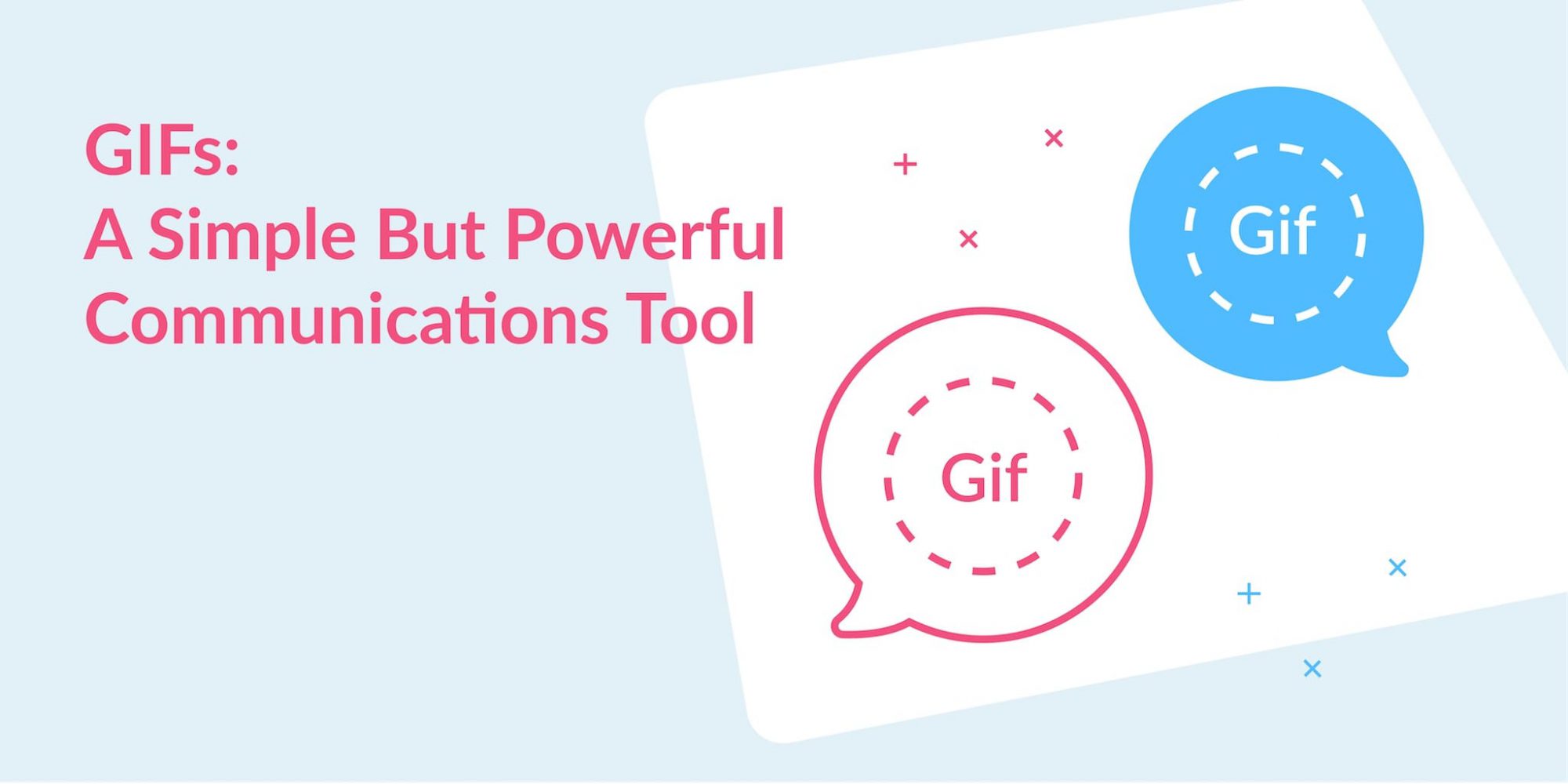GIFs: A Simple But Powerful Communications Tool

Table of Contents
How did the GIF, which turned 30 this year, become such a social messaging powerhouse?
GIF is a Graphics Interchange Format that supports soundless static and animated images. They use a lossless data compression technique that reduces the file size without quality loss. When GIFs were first introduced by Compuserve in 1987, slow internet connections and limited bandwidth prevailed. This made GIFs ideal for adding quick-loading, colorful, and animated visual content to web pages. Compuserve later found out that Unisys patented the compression technique a couple years prior, and the companies were in a copyright dispute until 1994 when all the relevant patents expired. Around the same time, more advanced image design and technology advances allowed other visual formats to emerge. While GIFs fell out of the limelight, they never completely faded away. You may remember one of the earlier GIFs – a blinking “under construction” animation shown on premature web pages. Or the dancing baby GIF that was popularized in the 90s on several television shows. But it was personalized social media sites in the early 2000s like MySpace and Tumblr that revived the GIF and made it an image contender. And now they have come back with a vengeance.
Engaging Your Audience Visually and Emotionally
Digital audiences are inundated with content and images. You only have a short opportunity to catch their attention by engaging them visually. Research shows that our brains engage and remember more when visuals and text are involved, making GIFs an ideal solution. But GIFs go a step further with their animation as image and movement combine to convey feeling and emotion. While it seems so simplistic – a short clip that you can play repeatedly or that can be on an infinite loop – the meanings are multifaceted. Unlike still images such as icons that have universal meanings, GIFs can have different interpretations. As published in Sage Journals’ article, Never Gonna GIF You Up, “…similar to double entendre, parody, camp, and other types of layered texts, GIFs can be (and often are) used to communicate hidden meanings in plain sight.”
There’s also something about its simplicity that is intriguing. It’s a quick clip, yet it is watched over and over again. It’s as if we’re waiting to see if something changes, or trying to figure out where it begins and ends, or sometimes it just gets funnier after you watch it for the fourth time.
GIFs Use and Effectiveness in Business
So why are these little nuggets a necessary addition to your marketing strategy? Besides being a fun, engaging way to reach your audience, they have emotional appeal. In business, this is key to motivating customers to take action and share. In addition, GIFs have so much versatility and flexibility. They can be used between two people to have an entertaining conversation or posted on a company’s social media site to bring attention to an important announcement. In addition, GIFs are easy to find or create and import into social media posts, blogs, and even text messages. They are simple for your audience to consume and share and can be used to:
- Provide emphasized feedback with little effort
- Serve as a call-to-action or click-through to more content
- Convey your brand to attract new customers
- Increase sales
- Promote your company culture to attract new talent
- Give audiences a preview of things to come
- Provide a quick demonstration

GIFs and social media have become the perfect combination and their growing importance in today’s business world is undeniable. Popular brands, political parties, and even government agencies have all joined in on this visual storytelling technique. GIFs are so popular, GIF keyboard apps are available to make it even easier to communicate visually. There are many existing GIFs on popular sites like GIPHY, makeagif.com, and Tenor that are ready for you to download and start using. But if you’re looking for something unique, you can also use these sites and others to create your own personalized GIF.
So whether it is a cute animal, amplified gestures, eccentric television character, or whatever else you chose, use these powerful conversation pieces to give your audience the opportunity to connect with your message, brand, and culture.

